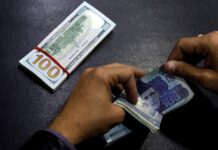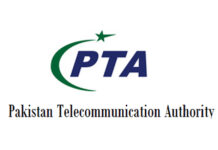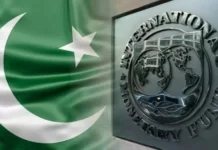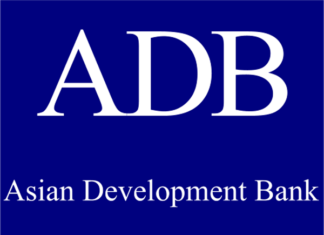The appearance of billboards stuck in the middle of Liberty Chowk in Lahore proudly advertising the Punjab Enforcement and Regulatory Authority (PERA) is the first subtle hint to the public that Punjab is set to go down the path of a draconian principality.
The authority, known by its acronym PERA, has been a major agenda item for Chief Minister Maryam Nawaz since the beginning of 2024. The premise for setting up the authority was innocent enough. Since the beginning of her term, the Chief Minister said she wanted to set up an enforcement agency at the disposal of the bureaucracy and the Chief Minister to enforce price regulation and help retrieve encroached land, they claimed.
The issue with price controls
Even in this initial, tame introduction, the idea of such an authority is frustrating. It represents the worst of Punjab politics. The idea that the government can, without any consequences, set prices for commodities and force private traders in a supposedly free market to comply. There is also the assumption that such actions will convince voters to support whatever party is in power.
We have seen many manifestations of this upsetting side of provincial politics before. The story is pretty familiar. You have the Chief Minister conduct a ‘surprise’ visit to a Ramzan Bazaar with the usual crowd of lackeys and protocol flunkies hot on their heels. The CM derides high prices, hears a few grievances, says a few random monosyllabic words about hoarding, and promises to bring down prices. The photographers of the Directorate-General of Public Relations (DGPR)–the government’s PR arm–click away, and press releases are forwarded to every newspaper known to man. So when Maryam Nawaz expressed an interest in visiting bazaars, announcing reductions in prices, and performing the press talk circuit, it was not too surprising. At best, it was her trying to be politically expedient given her party’s popularity problem. At worst, it was plain stupidity.
Price controls, of course, are a fairly stupid idea. Controlling prices was a policy introduced by the British during the Second World War, and implemented through their network of powerful district commissioners. When Partition happened soon after, India and Pakistan took different approaches to what they would do with this bureaucratic network.
Guided by Nehruvian Socialism, India continued the wartime efforts of the British and made price controls and rationing an integral feature in its economic policies. Pakistan took a different approach. Instead of focusing on using the bureaucracy as an economic management tool, the country’s military leadership focused on using it to monitor and govern for law and order. Economic policy largely favoured free market principles.
But the fear of inflation seems to dominate Pakistan’s discussion of many economic policies that have little to do with inflation or the cost of living. For example, both the public debate and the political debate over what prices the government should set for its agencies’ sales of wheat and fuels is dominated by a widespread belief that raising these prices, or using a flexible market-determined pricing policy, would cause inflation.
Look at it this way. Maryam Nawaz thinks the average voter that will determine her political future is poor and cannot afford basic commodities for their family. She decides she will, with a wave of her pen, cut prices down for certain commodities. But what is she hoping to achieve from this? In these conditions, the hope of the CM would be that people save money from this reduced price and buy other products. So if Maryam Nawaz has decreased the price of, say, cooking oil, people will try to use the money they save to buy more sugar.
Here’s the problem: if the set price for cooking oil is lower than what the market will bear, the producers of cooking oil–who have to buy their raw materials from outside Pakistan–will simply not have enough money to buy what they need to make their product. There will be a shortage of the product, which the government will claim is because of “hoarders”.
This basic economic principle was generally understood in Punjab for a long time. Sure, every major supermarket has a DC rate counter with exactly four bags of rice available, and there are still a few utility stores run by the Punjab Government, but by and large the prices of commodities in marketplaces have been left to the whims of the free market. Much of this attitude was actually fostered during Shehbaz Sharif’s time as Chief Minister of Punjab. Sure, the younger Sharif is as fond as anyone else of a good photo-op (his extensive collection of hats and boots would indicate as much) but he kept his Ramzan Bazaars and Sasti Roti Schemes in the realm of official subsidies instead of treating them like a magic wand with which inflation could be brought down.
Why then would Maryam Nawaz want to stake her political career on PERA, which was supposedly going to go around controlling prices? Because unlike what she was claiming, PERA would go far beyond the already ridiculous concept of price controls.
Ringing the alarm
The alarm bells first started ringing when the Punjab Enforcement and Regulatory Authority (PERA) Bill was presented in the assembly in the summer of 2024. On the 11th of August 2024, lawmakers gathered in the provincial assembly for a special session to mark Minorities Day. The purpose, as described by Speaker Malik Ahmed Khan, was to have a general discussion on the rights of minorities and recognise their contributions towards Pakistan. On the agenda item was something else. While lawmakers were busy giving generic speeches and providing the usual lip service, the assembly was introduced to the Punjab Enforcement and Regulation Bill 2024.
The government was trying to bludgeon it through.
Back in September, this publication covered the events leading up to the tabling of this bill and how a few well meaning members from within the PML-N played a role in delaying the bill. The initial cause for alarm was over how vaguely worded the bill was. What did the government mean by any special assignments given on their discretion? Why was a law so vaguely termed? The wording made it seem like this authority would have a role to play far beyond just prices and encroachments. So when the bill went to committee, more things started to come to the fore.
The bill proposes the establishment of the Punjab Enforcement Authority, in itself a dystopia name that clearly indicates the desire to set up a parallel structure of government. The purpose of the authority would be to “oversee, spearhead and monitor the implementation of the policy guidelines issued by the Government.”
Sounds a little vague? It is.
The wording has deliberately been kept this way to allow this authority leeway to interfere wherever it feels fit. As one lawmaker who is also a practising lawyer tells us, this means the authority would have jurisdiction to “implement” government policies in marketplaces, on government land, but also over private businesses and individuals that they feel are going against government policy.
It gets worse. The authority is set to have a central board chaired by the Chief Minister, with the deputy chair being the Chief Secretary. The rest of the members of the board, with the exception of three MPAs and three private members appointed by the government, are all the secretaries of different departments. A confederacy of bureaucratic ineptitude would suddenly be in control of Punjab through PERA.
The officers working under these bureaucrats will have an important economic function in terms of enforcing price controls, but they will essentially also have policing duties.
And it does not end there. Has an enforcement officer shut down your shop or made a raid on your place of business? Want to make a complaint? Well you are not supposed to go to a judge. Instead, you will go before a Hearing Officer. These officers also operate under the auspices of the Punjab Enforcement Authority, and will settle all matters investigated by enforcement officers. The bill includes provisions for Hearing Officers hearing cases related to fines, confiscation of carts, removal of any encroachments, and every other level of minor civil offence. It also has an overarching declaration to have the authority to hear any case that an enforcement officer may have picked up on.
They have also been given the power to “use reasonable force, in case of retaliation or obstruction in performing the functions under the Act, and the power to collect evidence through electronic means to inquire or investigate, such as CCTV camera recording; video recording; audio recording; photographs; electronic data; caller data records; geo-fencing; mobile device tracking; cyber surveillance and monitoring; digital forensics; and, Artificial Intelligence detection.” On top of this, they will also have a corp of sergeants under their authority who will have the right to arms.
For all intents and purposes, the bill sets up an alternative system of policing and justice within the province. One that is entirely loyal and answerable to the Chief Minister.
Where things stand
Back when Profit first did this story in September 2024, there was still some hope. The bill had been met with resistance and was sent to committee. The resistance did not last long. On the 13th of October, the bill was railroaded through the Punjab Assembly on a day when the opposition was absent and the speaker suspended debates.
That means PERA now exists. We are simply waiting for the implementation to be finished. Maryam Nawaz is impatient to have it done. In December 2024, she announced she wanted it done in three months. That has not happened. There have been functional delays.
The latest development is that Maryam Nawaz has given a deadline of the 30th of September this year for PERA to be functional. That gives us around 3-4 months before there is a second system of policing and justice in the province. Throughout the delays, the government has gone through the functions of making PERA exist at least as an idea. The authority has an official .gov website, it has officials, a chairman, uniforms for their officers, marked vehicles and other such trapping. They also have a social media presence. On Twitter, for example, they have an account that posts videos of meetings (with no audio naturally) that cut regularly to the chief minister either dictating instructions or looking on thoughtfully. The appearance of billboards full with Maryam Nawaz and Nawaz Sharif’s faces plastered next to the strange emblem for the authority (which sports the head of an angry looking clipart eagle as its mascot) is simply part of the continued effort to familiarise and prepare people for what is to come.
Private businesses, shopkeepers, traders, and others running small and medium businesses should brace themselves. It is an unfortunate situation because the Pakistani bureaucracy, particularly the district administration, has long missed the powers they had in the bureaucratic setup that the British left behind. Many of their political, policing, and magisterial powers were stripped by reforms made by the Bhutto administration, and later by the 18th Amendment signed and enacted during the government of Mr Bhutto’s son-in-law.
So every time a new government comes to power, one of the complaints the bureaucratic machine brings up ad nauseum is their inability to ‘implement’ directives of the government because of their lack of powers. In the near two decades since the 18th Amendment, they have failed to get these powers back. Through PERA, Maryam Nawaz has the distinction of being the first chief minister in any province to give into the bureaucracy. She would do well to remember, as her father and uncle will tell her too, that trusting these unelected individuals that once passed an exam will not win her any votes. Price controls won’t either. But what PERA will do is leave a dark stain on any chance she has on a legacy.























Such a good arrival that explains every step the government is doing to force themselves into our hearts! Instead of controlling the prices try to stabilize our production and agriculture sector. Solve the root problem, prices will fall down eventually. If a shopkeeper gets his strawberry for 100 rupees u can’t force him to sell them at 50 rupees! He needs a profit to feed himself and his family!